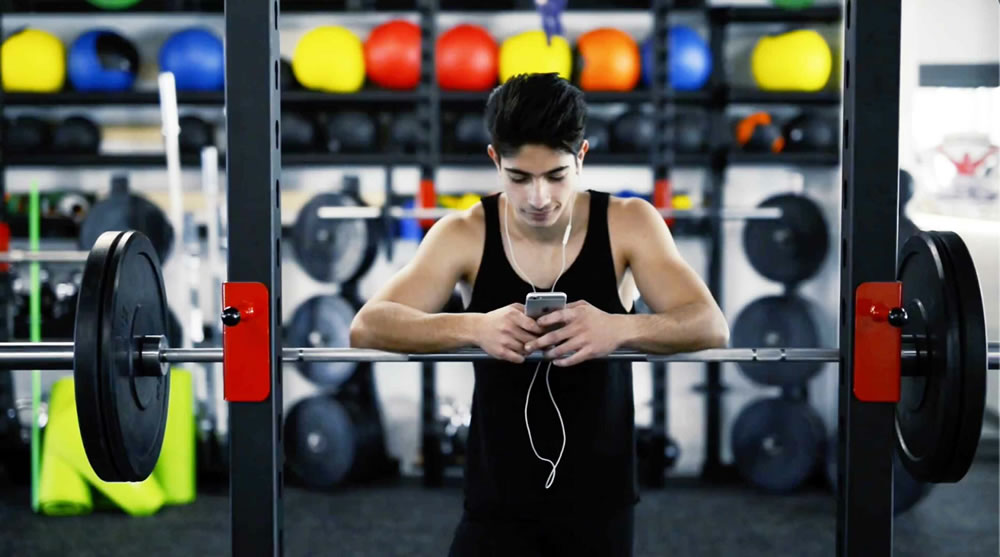Increased Access to Fitness Content
One of the most significant effects social media has on exercising habits is the fact that there is a lot of fitness content that is accessible. Prior to the emergence of social health networks, individuals were dependent on training aides, fitness manuals or videos, and personal instructors for proper execution of workout routines. As opposed to this nowadays, a person can be able to simply go online through sites such as YouTube, Instagram, and even Tiktok and find millions of workout videos and fitness regimens as well as other sports related activities.
When talking about social networks, many fitness experts and even high-class sportsmen prefer sharing their fitness programs, daily meals, and sports routines in them along with giving many tips and motivational posts. Fitness, thus, becomes mom and dad's all terrain vehicle, since consumers do not have to change price categories to obtain useful fitness resources’ help as it’s possible to do it without paying for a gym or a trainer.
These habits also feed increased attention and interest on rarer sports like cricket and aroused demand to online platforms like cricket online bet.

Community and Motivation
Social media inculcates a ‘togetherness’ especially for people who exercises. Sites like Instagram and TikTok have many people including fitness gurus, sportspeople and ordinary citizens who share their journey in fitness. Such sharing creates an environment where these persons can motivate and encourage each other towards a specific target whether it is weight loss, muscle gaining or increase in athletic performance.
People often find motivation through:
Fitness challenges: e.g., 30-day push-up or squat challenges.
Progress-sharing: Users document their own progress over weeks or months and encourage others.
Competitions: Some platforms organize online fitness competitions that allow people to virtually compete in running, weightlifting, or other sports, which motivates users to stay active.
Influence of Fitness Influencers
Influencers in fitness are a fundamental parameter in maintaining the physical activity of millions of persons. The goal is to build a certain trend in one or another activity – infuencers usually advise workout programs, buy diet capsules or wear certain sports clothes. Additionally, they are creating a strong image of themselves, which their fans would not mind copying.
For instance, tons of Youtube influencers upload “follow the instructor” workout videos, where the followers can work out from home in real-time as if in a live fitness class. Such workouts are usually very interesting and customized – for example there is HIIT, yoga, pilates and so on – and involve very few if any equipment, thus appealing to many.
Nonetheless, while this may be motivating, there is a caveat. Certain content creators glorify certain unachievable figures rendering a user with an uncomfortable inferiority complex or a different but dangerous condition of overtraining, particularly young users who are more susceptible to this kind of content.

Social Awareness of Sport and Sport-Focused Behavior
When it comes to sports culture, social media is also an effective enhancer. In this age of technology such sites as twitter and instagram enables the fans to witness and generate the current happenings of sports events, the records and interviews of athletes. Such has made the phenomena of spectators around the world to watch every single game of soccer, basketball, tennis, or almost any other sport even eSports.
Even athletes do not shy away from such sites and rather decide to use them as well in order to reach their fans. By virtue of such personal relationship with the fans they are able to retain large numbers of them and also motivate them to engage in physical activities. For instance, when fans spot their favorite sports personalities speaking about the workouts or fitness regimes, it serves as a good motivator for them to work on their fitness levels.
In addition, broadcasting sports events live and incorporating user generated content such as response videos enhances interaction and improves fan engagement. This additional engagement with athletes and sports teams also contributes to the growing desire to partake in sports and fitness activities.
Negative Influence: Unrealistic Expectations
Improvements, motivation or even aspirations do occur with the aid of social media but a more realistic challenge is posed, particularly in regard to the setting of possible fitness objectives. Many fitness models and athletes are known for their “smart-casual” approach to content creation. This means that both photo and video content is edited to its best, with some even more enhanced with various special effects. Such can lead to some unhealthy trends in relation to the body or even fitness enhancement levels or even the levels of performance in the various sports. There is always a risk of individuals getting demoralized in case they do not keep on keeping up with the merits of the tweak or else dissatisfaction from the perceived pace of improvements.
Apart from that, the other part of the social media convenience ‘needs’ some content that quite often borders on excess or dangerous fitness’ that includes practices such as starving , overtraining and all their associated injuries and dysfunctions. This may also cause some emotional breakdowns including but not limited to anxiety, complications like body dismorphia, and even eating-manias due to the compulsion for social media driven ideals.

Fitness and Exercise Trends
The advent of social media has inspired a lot of fitness tendencies and embedded different kinds of workouts in people; some were already available such like Zumba and CrossFit and emergent ones such as calisthenics and yoga. Social media has been instrumental in the assistance of different types of physical activities as users have been able to carry out various activities satisfactorily. Social media this rise has led to home workouts opportunities, during the period of the COVID-19 pandemics, which were largely propelled by the similar home based platforms like ‘Instagram’ and ‘Tiktok’.
Trends like HIIT (High-Intensity Interval Training) and bodyweight workouts became especially popular, given their effectiveness and ease of doing them at home without equipment. These workouts were easily adopted because they were quite flexible and could cater for any individual regardless of their current fitness state.
Impact on Youth and Adolescents
Social media, in particular, has a huge impact on the youngest age brackets, and especially on fitness-related social media. That is, adolescents who are more susceptible to such influences may get obsessed with the fitness fads that advocate for extreme workouts or ridiculously unattainable body shapes. The positives range from enhanced drive to engage in sporting activities to gathering more help. More attention should be paid to the disadvantages particularly on the issues of body image and mental health.
Thus big social media platforms like Instagram and TikTok should be used wisely, for instances where the users may be engaging in fitness appropriate materials without promoting or encouraging any harmful content or activities.

Conclusion
As every part of our lives today, social media has changed the way data pertaining to sports and exercising is consumed, which has made fitness participation easy, brought people together and shared sports culture all over the world. Positive aspects such as inspiration, motivation, and accessibility are very prominent in social media and cannot be ignored. Still there vague terms like social responsibility and unhealthy obsession with active lifestyle. Encouraging the active social interaction, social media can be an effective force in making the society healthier and active than it is at present.




























